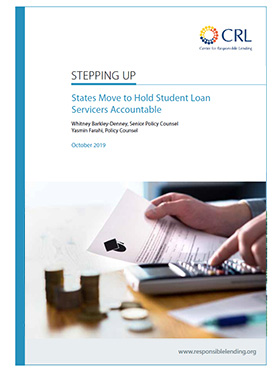Download a table of state student loan servicing laws from the report. (Updated September 2022)
Today, 44 million Americans are saddled with student loan debt. They currently owe over $1.5 trillion—an amount which has more than doubled over the last decade. The causes of this exploding debt burden are many: increasing tuition, stagnant wages, the shifting role of federal government in student lending, divestment from higher education, and the growth in predatory for-profit colleges. Poor servicing practices, particularly placing borrowers in consecutive forbearances instead of appropriate income-driven repayment (IDR) plans, have also contributed to this explosive growth.
In this paper, we examine why and how states have stepped and should step up to address this crisis. With rollbacks on protections and enforcement at the federal level and widespread concerns about student loan debt and poor servicing practices, states are increasingly exercising their traditional police powers, implementing reforms to ensure their borrowers are treated fairly by student loan servicers. Having learned from pioneering states who led the way beginning in 2015, a new wave of state legislation passed in the 2019 legislative season provides strong consumer protections. These protections include common sense standards for servicers and increased avenues for meaningful enforcement against any actor engaged in harmful servicing practices in the states.
With these reforms being implemented, nearly 30% of outstanding student loan debt in the country is now held by borrowers from states where enhanced consumer protections are in place or are being implemented for student loan borrowers. As more states step up to ensure that consumers are treated fairly during the repayment of their student loans, they will be playing a crucial role in shaping the lives of millions of borrowers and the overall health of our economy.
